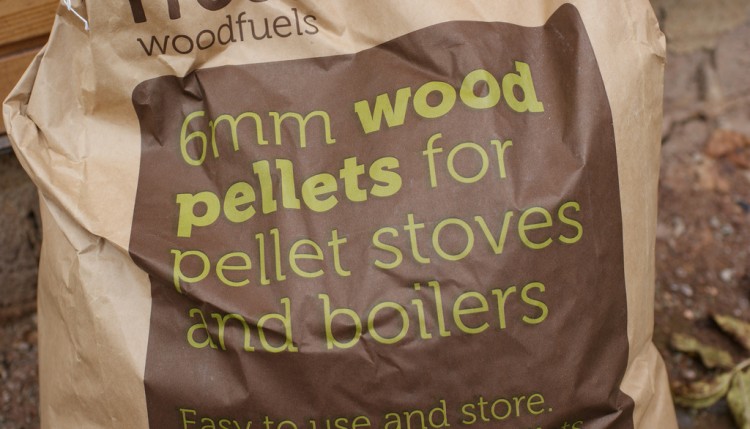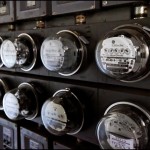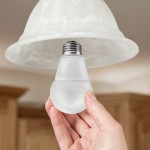Disclosure: This post is sponsored by Choose Energy, an online marketplace where consumers can compare rates from electricity and natural gas suppliers. I'm a member of their compensated blogger program; however, all opinions…

10 ways Massachusetts can save you money this winter
Here’s a little secret about government programs: There are TONS of them — especially in a progressive state like Massachusetts — and unless you’re some kind of mega-wealthy plutocrat (in which case you’re probably reading the Wall Street Journal and not my humble blog), a number of them can likely help you out in some way.
They range from common, popular tax breaks — like the 30% federal tax credit for installing solar panels, or deductions for mortgage interest and 529 college savings plans — to lesser-known gimmes such as discounted or free LED light bulbs or zero-interest loans for energy-efficient upgrades to your home.
All these little initiatives amount to free money if you can take advantage of them. The thing is, most people don’t think to look, don’t know where to look, don’t realize they’re eligible, or just don’t want to deal with the considerable red tape that so often accompanies them.
If you live in Massachusetts and own your home, there are a number of incentives out there to help you make your home more energy efficient. These improvements can help you lower your gas, oil, or electric bills and add value to your home — and some come with generous subsidies as well.
Most of these programs are administered not by the state itself but by independent companies such as Mass Save or Next Step Living, although their existence can usually be traced back to federal or state-funded incentives and renewable energy mandates. (Does National Grid really want you to use less electricity or gas? Probably not, but they’re reimbursed to help you do so.) In most cases, you need to be an existing customer of one of the big utilities, such as National Grid or Eversource in the Boston area.
Here are 10 ways the Commonwealth will kick in some cash to help you upgrade your home and save on your energy bills:
Programmable thermostat rebates
You can get a $25 rebate on up to two programmable thermostats, or a $100 Mass Save rebate on a Wi-Fi enabled thermostat. The idea is to set your thermostat to drop while you’re at work, and kick back up right before you get home, so you’re not fighting nature an extra eight hours a day. Likewise, you can set it to automatically go down a couple degrees every night and warm back up just as you’re getting out of bed in the morning.
Free energy audit
The easiest (and free-est) way to get started is by scheduling a home energy audit. You can do this through Mass Save or Next Step Living, and it shouldn’t cost anything. They’ll send someone out to your house who will spend an hour or two examining your home’s energy usage, checking for drafts, and reviewing ways large and small that you could be saving energy.
Along the way, the energy auditor may typically replace some or all of your old light bulbs with energy-efficient LED or CFL bulbs free of charge, install a water-saving showerhead, or make other small, quick — and free — improvements. Our guy even installed some foam insulation around our hot water pipes in the basement, all for free.
At the end, you’ll receive a full report with some bigger recommendations — such as adding insulation to your attic or exterior walls, or replacing an old, inefficient boiler — and a breakdown of what kind of cost and savings are involved with each option.
This report is key to taking advantage of other programs — and not just because it helps you identify which improvements will get you the best bang for your buck. To qualify for some of the other incentives below, you typically have to have an energy audit performed first.
Up to $2,000 in Mass Save rebates for insulation
If your house is old — and, in Boston, there’s a good chance it is — the biggest bang for your buck when it comes to energy efficiency will usually come from installing insulation in the right spots.
Without proper insulation in your attic, for instance, hot air will simply rise (as hot air is wont to do) from your living area into the attic, warming up your grandma’s old dresser and wedding photos — not to mention melting the snow on your roof too fast, which can cause ice dams and other problems. You usually want your attic to be within 10 degrees of the temperature outside, and that means putting down a thick layer of insulation on the attic floor to keep warm air in your bedroom or living room where it belongs.
Installing insulation in your attic is often a fairly straightforward if dirty DIY project if you’re able to get up there. If you do it yourself, make sure you wear protective gear — a disposable work suit, goggles, gloves, and a face mask. You can buy loose insulation or big rolls of the pink stuff at Home Depot and simply lay them down between the joists if there aren’t any floorboards.
I did ours myself, but it was a pretty backbreaking, dismal day: Our walk-up attic does have floors in most spots, which meant prying up the floorboards, filling in the cavities with insulation, and then hammering the boards back down again.
Then there’s insulating your exterior walls — this is not a DIY project. It requires drilling holes in your wall every 15 inches or so and blowing in the insulation to fill up the wall cavity between the studs. If it’s done on the outside, they usually pop off a shingle or the section of siding and then replace it; when that’s not an option, they’ll drill into your inside wall and then plug it, but you’ll need to paint afterward.
This doesn’t have as big an effect as insulating the attic — hot air moves upward more than sideways — but it will still make a big difference in your heating bill and overall comfort level.
All that said, a Mass Save rebate will pay for 75% of the cost, up to $2,000, if you hire someone to install the insulation for you. They have a list of approved contractors and it’s a fairly simple process. Even if it ends up costing you more than that — say $4,000 — you’re only paying for half of the work and it will have a huge impact on your energy bills for years to come.
Up to $1,600 in Mass Save rebates toward heating equipment
Another option your energy assessment might recommend is to replace old and inefficient boilers, furnaces, and water heaters. If your heating unit is 20 years old or more, Mass Save offers rebates of $300 to $1,600 on new, high-efficiency replacement models, and rebates of $400 to $800 on an efficient indirect or “tankless” water heater.
Unfortunately, there are no longer rebates available for steam boilers. We were able to snag a pretty hefty rebate two years ago for upgrading our ancient, 76%-efficient boiler to one with a modest 82.5% efficiency rating (that’s about as efficient as a steam system gets).
And while you can usually use these rebates to help pay for an oil to gas conversion — we did, and wow what a difference it’s made — that can’t be the only reason you’re upgrading the equipment. In other words, to convert from oil to gas, you need to be upgrading a very old and inefficient oil burner to a high-efficiency gas boiler.
Finally, it’s worth noting that you can typically select your own installer (a plumber or HVAC company) or find one through the program. Your installer should be able to navigate the rebate forms and paperwork on your behalf, which makes it a lot easier.
0% HEAT Loan
On top of the equipment rebates when you make a big energy improvements, you may also be able to finance most of the project’s cost with a zero-interest loan thanks to state subsidies. Replacing a boiler might run you $4,000 to $6,000 between the boiler itself and the installation, so spreading out the payments without penalty is a huge plus.
We replaced both of our boilers for about $10,000 total, and financed most of it over seven years at 0% interest through the HEAT Loan program. We couldn’t have pulled it off otherwise, and the savings are pretty huge: Even compared to a competitive 4% interest rate on a home equity loan, that’s a savings of almost $1,500 in interest over the life of a loan.
Plus, since the state backs these loans, they’re a little easier to qualify for (compared to a typical home equity loan) if you have less-than-perfect credit, lower income, or no real equity in your house. You can request a HEAT Loan application form with your energy assessment, and you apply through an approved traditional lender (we used Eastern Bank). You can find out more about the HEAT Loan on MassSave.com.
Up to $500 toward heat pumps and central AC
This past summer I spoke to Alicia Barton, CEO of the Massachusetts Clean Energy Collective, for a Boston Globe story about residential solar. At the time I asked her if there was any other new clean-energy technology that could give solar a run for its money in terms of rapid and widespread adoption, and she told me, “I will say in terms of thermal technologies, heating and cooling, we’re seeing a big increase in interest in heat pumps.”
Heat pumps actually operate in a manner similar to your refrigerator, taking advantage of ambient temperature differences. Their cold coils are able to soak up the available warmth from outside — even when it’s below freezing out — and transfer that heat indoors. Likewise, in summer, they can transfer heat from indoors back outside.
“There’s two kinds in a nutshell,” Barton said. “There’s essentially ground source, which draw on — like people think popularly of geothermal, but essentially they use the temperature differential in the ground to create hot air and cold air. And then there’s air source, or they can be called ductless mini splits, and they kind of get built right into the wall and provide heating and air conditioning. They’re highly efficient and essentially draw on ambient temperature differences.”
Some people use heat pumps primarily for air conditioning in summer but also in conjunction with a traditional boiler or furnace in the winter to lower their gas or oil bills.
Mass Save currently offers rebates of $250 to $500 on heat pump and cooling equipment, and the equipment and installation can be financed at 0% through the HEAT Loan program. Ground source heat pumps may also qualify for a 30% federal tax credit.
Up to a $12,000 rebate on wood pellet central heating
The MassCEC offers rebates of up to $12,000 to residential homeowners who install a central wood-pellet heating system. This isn’t just a cozy pellet stove — these systems heat your entire home, just like a regular boiler or furnace, but burn wood pellets (a renewable resource made of compressed sawdust) instead of oil or gas.
The MassCEC has a list of approved installers, who should be able to walk you through the rebate process and take care of the paperwork for you. This upgrade to biomass heat is also eligible for 0% HEAT Loan financing.
$50 for your old fridge
This one is a pretty great deal, especially if your town charges for trash pickup. If you have an old, unwanted refrigerator or freezer that still works, Mass Save will send someone to haul it away for you and recycle it properly — and pay you 50 bucks!
$50 rebate on Energy Star dryers
Buying a new electric clothes dryer? Get an Energy Star-rated appliance and you can score a $50 rebate. Honestly, you should get one anyway — they use 20% less energy, usually just through better design (not weaker performance), and that adds up over time.
Discounts on smart power strips, LEDs, and more from the Mass Save store
Finally, there are an array of other miscellaneous products you can get a rebate on or buy at a discount through the MassSave store, including LED light bulbs, LED light fixtures, efficient showerheads, dehumidifiers and air purifiers, and smart power strips.
Those last gadgets are pretty cool: A smart strip can reduce phantom power drain by turning off connected devices whenever a “control” device is switched off — so, for example, your DVD player and Xbox automatically get “unplugged” whenever the TV is turned off. Check out the MassSave store here.
Note: Eligibility varies, and these programs tend to change periodically and may expire without notice. Check MassSave.com for current incentives and eligibility.



